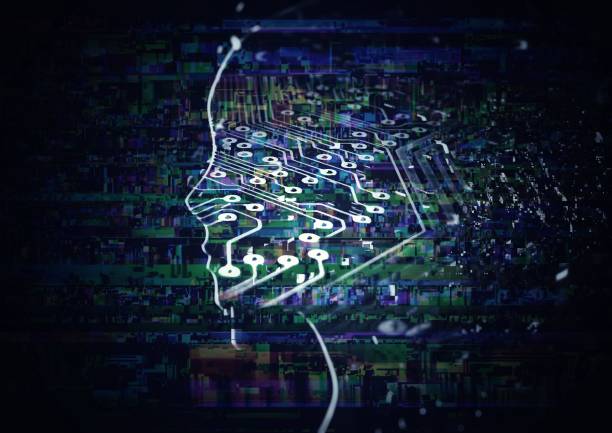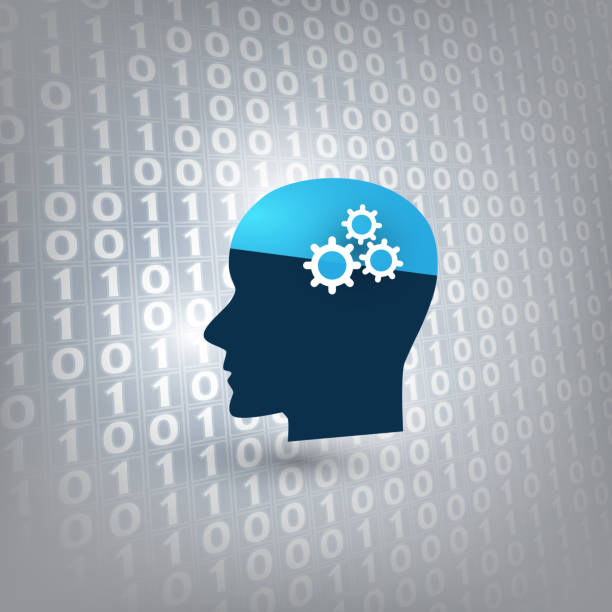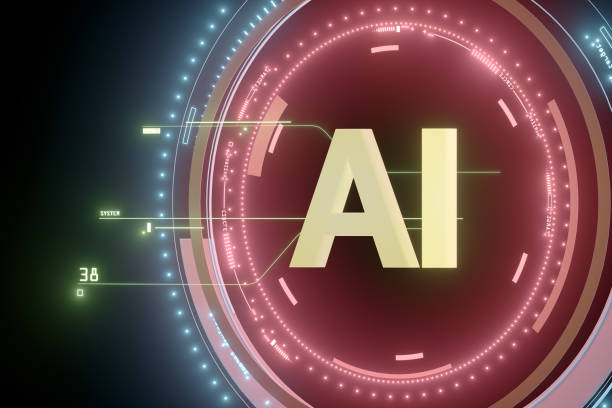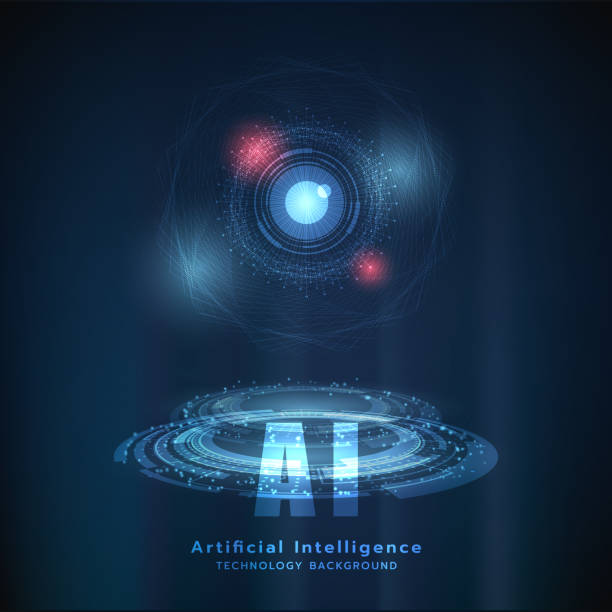An Introduction to the World of AI Robots
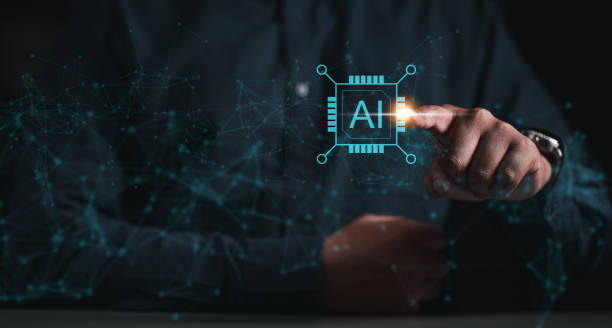
In today’s fast-paced world, the concepts of #robotics and #artificial_intelligence have permeated our lives more than ever.
An AI robot is not merely a mechanical machine; rather, it is a complex system capable of learning, decision-making, and problem-solving in a human-like manner.
These emerging entities are the result of integrating the most advanced AI algorithms with robotic hardware to perform various tasks with high precision and speed.
From factory production lines to complex surgeries and even social interactions, the presence of this technology is becoming more prominent day by day.
A deeper understanding of the capabilities and limitations of these systems is essential for everyone in the digital age.
This article, in an educational and explanatory manner, introduces you to various aspects of this technological phenomenon.
Our goal is not only to provide comprehensive information but also to create a platform for thought and analysis regarding the future shaped by the presence of these intelligent machines.
With rapid advancements in fields such as natural language processing and computer vision, an AI robot can also demonstrate impressive performance in dynamic environments.
This article will help you gain a comprehensive view of these changes and, with sufficient information, embrace a future where machines and humans will live and work alongside each other more than ever.
This is an exciting journey into the emerging world of artificial intelligence and robotics that can transform your perspective on technology.
Is your online sales not as expected? With Rasawweb, solve low sales and poor user experience forever!
✅ Increase visitor-to-customer conversion rate
✅ Create a pleasant user experience and increase customer trust
⚡ Act now to get a free consultation!
Technologies Behind Every AI Robot
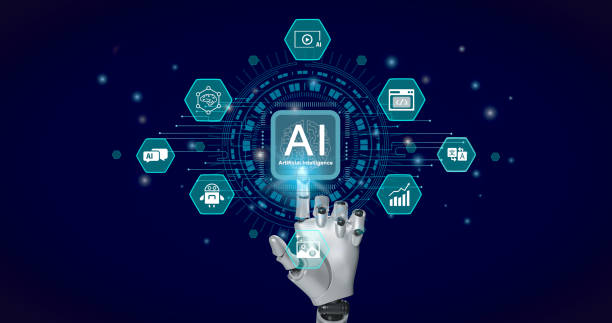
The architecture of an AI robot consists of several complex technological layers, each playing a vital role in its ultimate performance.
At the heart of these systems are deep learning algorithms and artificial neural networks that allow the robot to learn from data and recognize patterns.
This specialized part of AI enables the processing of vast amounts of sensory information, such as images and sounds.
Advanced sensors and transducers act as the eyes and ears of these intelligent machines; from high-resolution cameras and lidars for environmental perception to touch and pressure sensors for precise physical interaction.
Servo motors and actuators are the robot’s muscles, enabling precise and controlled movement.
Navigation and motion planning systems help the robot move autonomously in complex environments and avoid obstacles.
Furthermore, a significant part of robotic artificial intelligence is dedicated to the ability of planning and reasoning, which allows it to make logical decisions and optimize tasks.
Communication with cloud platforms and access to large databases significantly enhance the learning and decision-making capabilities of these robots.
These connections allow them to access global knowledge and improve their performance in real-time.
These technological layers work together to enable the robot to perform assigned tasks with high efficiency.
It is this combination of engineering and computer science that enables intelligent machines to perform tasks once only possible in science fiction.
Amazing Applications of AI Robots in Industry
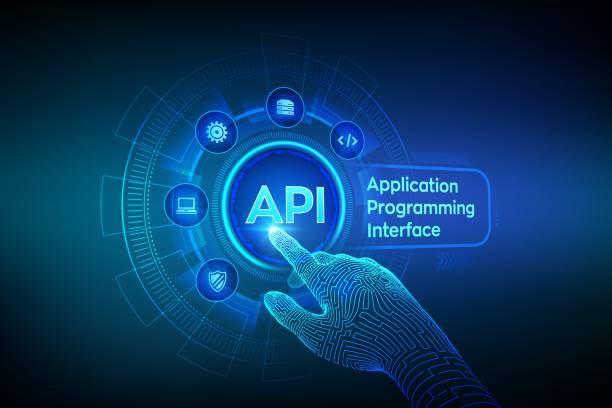
AI robots are no longer an abstract concept; they have become a tangible reality in various industries.
From automotive factories where robots assemble parts with micron precision to logistics warehouses where robotic systems identify and move packages, the presence of these machines is undeniable.
In Industry 4.0, automation and efficiency have reached their peak through intelligent robots.
These robots are capable of performing repetitive, dangerous, or highly precise tasks in the best possible way, thereby increasing workplace safety and reducing production costs.
In agriculture, AI-equipped robots can autonomously monitor fields, identify pests, and even harvest crops, leading to increased productivity and reduced resource consumption.
In medicine, AI robots play a vital role in precise surgeries, disease diagnosis, and even the development of new drugs.
These applications not only improve efficiency but also enhance the quality of human life.
This news and explanatory section provides you with a comprehensive overview of these developments and demonstrates how this technology is transforming various industries.
Table 1: Applications of AI Robots in Various Industries
| Industry | Main Application of AI Robot | Key Advantages |
|---|---|---|
| Manufacturing and Industry | Precision assembly, welding, material handling | Increased speed, high precision, reduced human error |
| Medicine and Healthcare | Robotic surgery, disease diagnosis, rehabilitation | Surgical precision, reduced recovery time, access to difficult areas |
| Agriculture | Planting, crop monitoring, precise spraying, mechanized harvesting | Increased productivity, reduced water and pesticide consumption, reduced labor |
| Logistics and Warehousing | Sorting, goods transportation, inventory management | Increased processing speed, reduced warehousing errors, space optimization |
| Customer Service | Chatbots, virtual assistants, reception robots | 24/7 responsiveness, reduced waiting time, improved customer experience |
These developments demonstrate the immense potential of intelligent machines in changing industrial paradigms and increasing efficiency on a global scale.
Challenges and Ethical Considerations in AI Robot Development
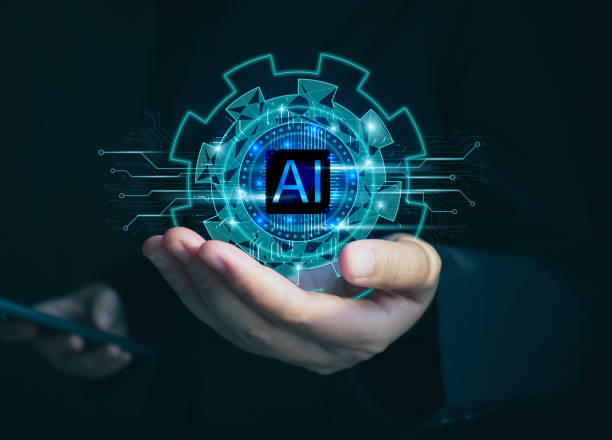
Alongside all its remarkable advantages, the development and expansion of AI robots come with significant challenges and questionable content regarding ethics.
One of the biggest concerns is the impact of this technology on the job market.
With increasing task automation, will millions of jobs be lost? And how should society prepare for these widespread changes? These questions require innovative solutions, including workforce retraining and the creation of new jobs.
Other ethical issues include data privacy and security.
Robots that continuously collect data can raise concerns about how this personal information is used, stored, and protected.
AI ethics also addresses the accountability of robots for their decisions.
If an autonomous robot is involved in an accident, who will be responsible? The programmer, the manufacturing company, or the robot itself?
Furthermore, algorithmic biases are also a serious challenge.
If training data contains human biases, the AI robot may also learn and apply these biases in its decisions, which can lead to discrimination and inequality.
For example, facial recognition systems that are less accurate in identifying people of color.
This analytical section reminds us that technological advancement must always be accompanied by human and ethical considerations to prevent unintended consequences and protect the interests of all segments of society.
These issues require extensive discussions and the establishment of appropriate laws to ensure a fair and sustainable future.
Are you tired of your company’s website not meeting your expectations? With Rasawweb, design a professional website that truly represents your business.
✅ Increased attraction of new customers and sales leads
✅ Increased brand credibility and trust among your audience
⚡ Get a free website design consultation!
The Future of Employment with AI Robots
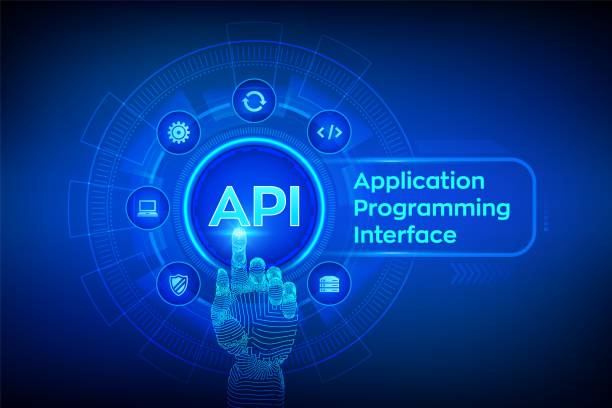
The discussion surrounding the future of employment in light of the expansion of AI robots is one of the hottest topics currently.
Are these robots a threat to human jobs or do they create new opportunities? The reality is that both scenarios are plausible.
Some repetitive and high-precision jobs are likely to be automated by these systems.
This means that the need for human labor in these areas will decrease, but at the same time, new jobs will emerge in the areas of developing, maintaining, training, and overseeing these robots.
For instance, the need for robotic engineers, data mining specialists, AI ethicists, and user experience designers for these systems will significantly increase.
Analysis and prediction indicate that jobs requiring creative skills, high emotional intelligence, critical thinking, and complex problem-solving will be less affected.
In fact, the presence of AI robots can allow humans to be freed from arduous and repetitive tasks and engage in higher value-added and more creative work.
This is a paradigm shift that necessitates reskilling and upskilling at all levels of society.
Governments, educational institutions, and companies must collaborate to design new training programs to prepare the workforce for this new future.
This issue presents an opportunity for society to focus on human skills that robots cannot fully replicate, such as empathy, innovation, and complex social interactions.
Therefore, the future of employment with advanced robotic systems is more a transformation than a complete destruction.
How an AI Robot Learns
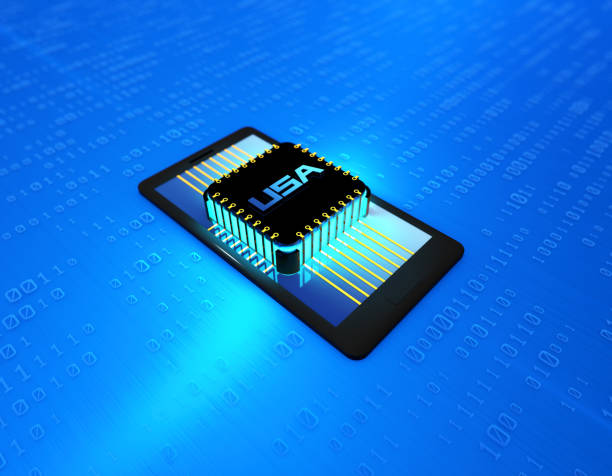
One of the most fascinating aspects of an AI robot is its ability to learn.
This learning is not about memorizing information, but about improving performance based on experience and data.
This process typically occurs through machine learning and especially deep learning.
In supervised learning, the robot is trained with a dataset of labeled data; meaning it is shown both correct inputs and outputs.
For example, for object recognition, thousands of images of various objects along with their correct names are fed to the robot.
In unsupervised learning, the robot discovers patterns and structures in data without direct guidance.
This method is useful for tasks such as data clustering or anomaly detection.
One of the most advanced methods is reinforcement learning, where the robot learns through trial and error.
The robot interacts with an environment and receives rewards for correct actions and penalties for incorrect ones, leading to the optimization of its behavior.
This educational and specialized section demonstrates how complex AI architectures enable robots to autonomously acquire knowledge and improve their performance.
It is this continuous learning ability that has transformed intelligent robots into powerful and flexible tools.
The Role of AI Robots in Everyday Life
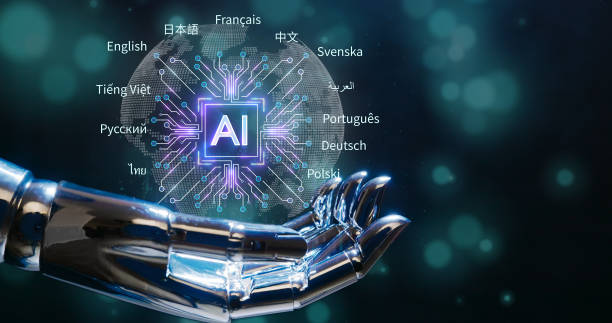
You might think AI robots are only used in large factories or advanced laboratories, but the truth is their role is increasingly evident in our daily lives.
From our smartphones utilizing intelligent voice assistants like Siri or Google Assistant to robotic vacuum cleaners tidying our homes, AI is simplifying our lives.
Service robots in hotels and airports welcome passengers and provide information, and food delivery robots in some cities deliver food to customers.
Even in education, intelligent learning platforms use software robots to personalize educational content and provide feedback to students.
In the near future, we will likely see more companion robots and robotic personal assistants that help the elderly or act as playmates for children.
This entertaining and guiding aspect shows how AI robots can act as useful tools and even companions in our homes, helping us with daily tasks.
These technologies are reshaping our interactions with the environment and each other, making life easier and more efficient.
Table 2: Types of AI Robots and Everyday Applications
| Type of Robot/Intelligent System | Application Example | Role in Everyday Life |
|---|---|---|
| Voice Assistants (Software) | Siri, Google Assistant, Alexa | Setting reminders, playing music, answering questions |
| Robotic Vacuum Cleaner | Roomba | Automatic home cleaning, reducing household chores |
| Delivery Robots | Food or package courier robots | Fast and uninterrupted delivery of goods, shopping convenience |
| Educational and Entertainment Robots | Coding robots for children, smart toys | Interactive learning, entertainment, and cognitive skill development |
| Smart Home Systems | Smart thermostats, automatic lighting | Optimizing energy consumption, increasing home comfort and security |
These examples are just a fraction of the widespread applications of intelligent machines at the core of our lives, and their further expansion is expected in the near future.
Comparing AI Robots with Human Intelligence

Comparing AI robots with human intelligence is a profound and analytical topic that helps in better understanding the capabilities and limitations of both.
While intelligent robots perform specific and repetitive tasks with unmatched speed and precision, human intelligence possesses capabilities that are currently beyond the reach of machines.
Robots excel in processing vast amounts of data, identifying patterns, and executing complex algorithms.
They are tireless and are not influenced by emotions or personal biases.
These characteristics make them ideal for tasks such as medical data analysis, financial management, and quality control in manufacturing.
However, human intelligence includes abilities such as creativity, critical thinking, emotional intelligence, understanding irony and humor, and the ability to form deep human connections, which are inimitable by machines.
Humans can make creative decisions in unexpected situations without prior data and adapt to new circumstances.
Intelligent machines, although advancing, are not yet capable of understanding intuition, conscience, or consciousness.
This thought-provoking content helps us to think of coexistence and mutual completion rather than competition.
Robots can augment human capabilities and ultimately create a collaborative future where the strengths of both types of intelligence are utilized.
Disappointed with your e-commerce site’s low conversion rate? Rasawweb transforms your e-commerce site into a powerful tool for attracting and converting customers!
✅ Significant increase in visitor-to-buyer conversion rate
✅ Unique user experience for increased customer satisfaction and loyalty⚡ Get a free consultation from Rasawweb!
Guide to Choosing and Using AI Robots
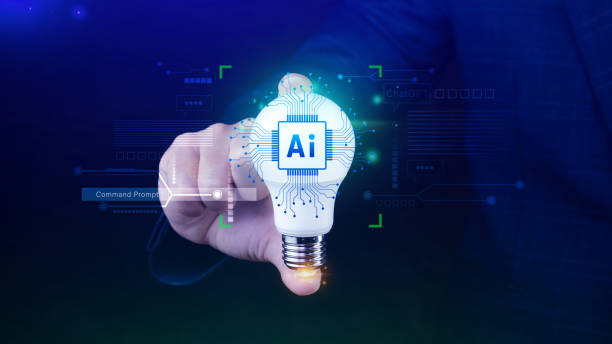
Optimal selection and use of AI robots, whether for industrial or domestic applications, require a correct understanding of needs and capabilities.
This section, as a comprehensive guide, helps you make the best decision.
First, clearly define your needs and goals.
Are you looking to increase productivity in a production line or seeking a household assistant for daily tasks? Each type of application requires a robot with different capabilities and features.
Next, pay attention to the robot’s technical specifications: processing power, sensor types, motion capabilities, learning ability, and adaptability to different environments.
Also, its software and integration capability with existing systems are very important.
Data security and privacy as well, especially if the robot handles sensitive information.
After-sales service and technical support are also of high importance, as robots are complex systems and may require maintenance and troubleshooting.
Finally, pay attention to the ethical aspects and social impacts of using the robot in its specific environment.
Training users to work with the robot and creating a safe and efficient environment are also essential.
By considering these points, you can choose a suitable intelligent machine and benefit from its advantages.
This is a strategic decision-making process that can lead to significant improvements in efficiency and quality of life.
New Horizons for AI Robots
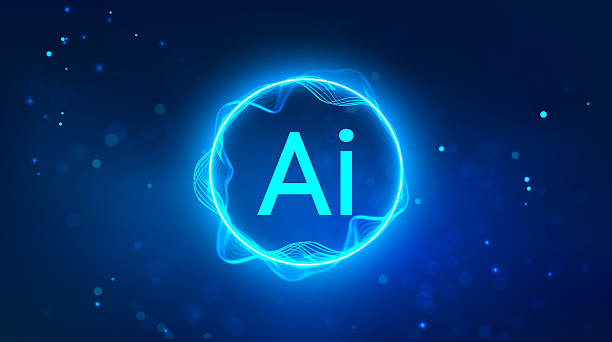
The future of AI robots is full of exciting and newsworthy potentials that go beyond our current imaginations.
Researchers are working on robots capable of autonomous evolution; that is, robots that can change their physical structure and software to adapt to new tasks or changing environments.
These advancements could lead to a new generation of highly flexible robots.
Another important horizon is the development of social robots capable of understanding and expressing human emotions.
These robots could play a role in elder care, child education, or even psychological counseling.
Nanorobots are also under development, which can move within the human body for medical purposes, delivering targeted drugs to diseased cells or performing very delicate surgeries.
Intelligent robots will also play an increasing role in space exploration, with the ability to perform complex operations in hazardous environments without human presence.
This analysis and look into the future show that the potential of AI robots is virtually limitless and can revolutionize every aspect of our lives.
These advancements also raise deep philosophical questions: Will robots someday achieve self-awareness? And how should we treat beings that are in every respect similar to humans?
Frequently Asked Questions
| Question | Answer |
|---|---|
| What is an AI robot? | It is a robot that uses artificial intelligence capabilities for environmental perception, reasoning, learning, and decision-making to perform complex tasks independently. |
| What is the main difference between a regular robot and an AI robot? | AI robots can learn and adapt to their environment, while regular robots typically operate based on fixed and pre-programmed instructions. |
| In which fields are AI robots used? | In fields such as industry (production lines), medicine (robotic surgeries), services (customer support, smart vacuum cleaners), exploration (space and underwater), and entertainment. |
| How do AI robots learn? | They acquire new skills by analyzing large datasets and identifying patterns through Machine Learning and Deep Learning algorithms. |
| Can AI robots have emotions? | Currently, no. They can identify or simulate emotions, but they do not experience real emotions like humans. |
| What are the most important benefits of using AI robots? | Increased productivity, reduced human error, performing dangerous or repetitive tasks, and providing innovative and efficient services. |
| What challenges exist in the development of AI robots? | The need for abundant and high-quality data, algorithmic complexity, ethical issues, cybersecurity, and high research and development costs. |
| Are AI robots dangerous to humans? | No, with adherence to safe design principles and ethical regulations. Concerns are mostly related to social and economic impacts, such as changes in the job market. |
| What is an example of an AI robot in everyday life? | Smart robotic vacuum cleaners (like Roomba) that autonomously map and clean homes, or intelligent voice assistants (like Siri and Alexa). |
| How is the future of AI robots predicted? | They are expected to become smarter, more autonomous, and capable of more complex interactions with humans, playing a more prominent role in industry, medicine, transportation, and everyday life. |
And other services of Rasawweb Advertising Agency in the field of advertising
Smart Marketplace: A professional solution for digital branding with a focus on intelligent data analysis.
Smart SEO: A dedicated service for growth in customer behavior analysis based on Google Ads management.
Smart Link Building: A professional solution for increasing sales with a focus on custom programming.
Smart Link Building: Professional optimization for customer acquisition using attractive UI design.
Smart Brand Identity: Transform campaign management with precise audience targeting.
And over a hundred other services in internet advertising, advertising consultation, and organizational solutions
Internet Advertising | Advertising Strategy | Advertorials
Sources
The Future of AI and RoboticsRobotic Revolution: Impact on SocietyAnalysis: AI Robot Revolution and the Future of HumanityChallenges of AI in the 21st Century
? For your business to soar in the digital world and achieve unprecedented success, Rasawweb Afarin Digital Marketing Agency is by your side with its expertise and experience. From user-friendly website design and SEO optimization to executing targeted advertising campaigns, we are ready to transform your brand in the online space and pave the way for sustainable growth for you.
For consultation and to receive services, contact us.
📍 Tehran, Mirdamad Street, Next to Central Bank, Southern Kazerun Alley, Ramin Alley, No. 6

